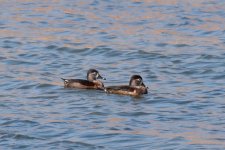MarcelHaas
Well-known member
Due in spring 2013, published by Lynx.
Rare Birds of the Canary Islands / Aves raras de las Islas Canarias
By Eduardo Garcia-del-Rey and Francisco Javier García Vargas
More information: http://www.lynxeds.com/product/rare-birds-canary-islands-aves-raras-islas-canarias.
Rare Birds of the Canary Islands / Aves raras de las Islas Canarias
By Eduardo Garcia-del-Rey and Francisco Javier García Vargas
This book compiles all official rare bird records, including those presently treated as “rarities” by the Spanish Birds Rarities Committee as well as some added by the authors when reliable pictures were available. More than 169 species accounts are given with precise records covering a period of c. 30 years at the island level, accompanied by their corresponding distribution map, month (figure) and year (histogram) occurrence, plus high-quality pictures. A comprehensive reference for anyone interested in the vagrancy patterns of rare species within the Canary Islands and the Conception Bank.
More information: http://www.lynxeds.com/product/rare-birds-canary-islands-aves-raras-islas-canarias.








